The artworks of Tina Marais are the kind that make you stop and stare. It’s clear that deep consideration has been given to the creation of every piece.
Tina is a visual and textile artist who thinks about the entanglements of materiality, ecological structures and the memories of places and things.
She creates three-dimensional, tactile sculptures using a wide range of textiles, thread and stitch. And she loves to incorporate found objects from thrift stores and markets to add extra texture and intrigue to her assemblages.
Tina’s work is about capturing the passage of time through texture – a blend of metamorphosis and sensuality, resulting in new forms inspired by the living, mineral and alchemical realms.
Take a look and see what you discover in the twists, folds and contortions of her cloth.
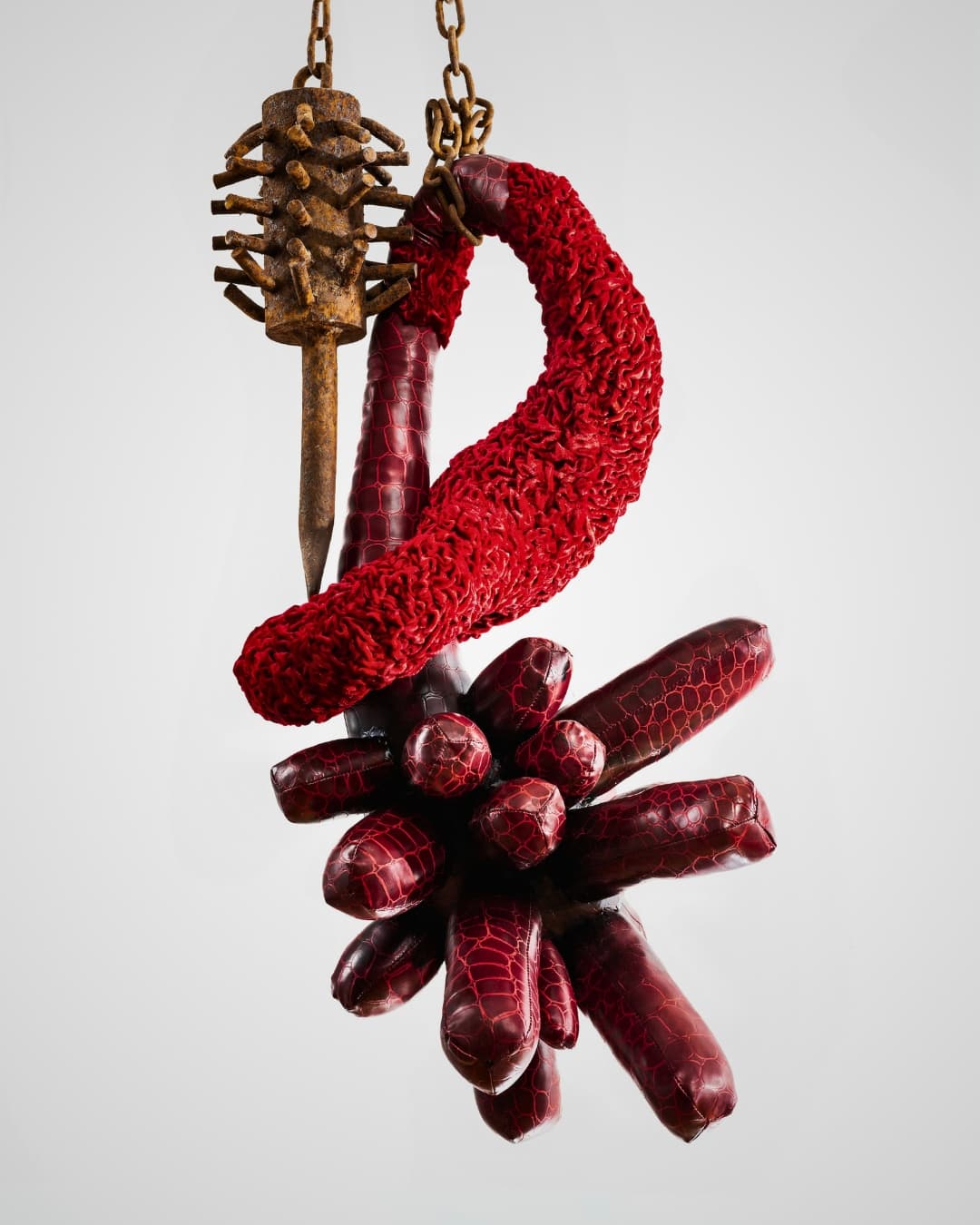
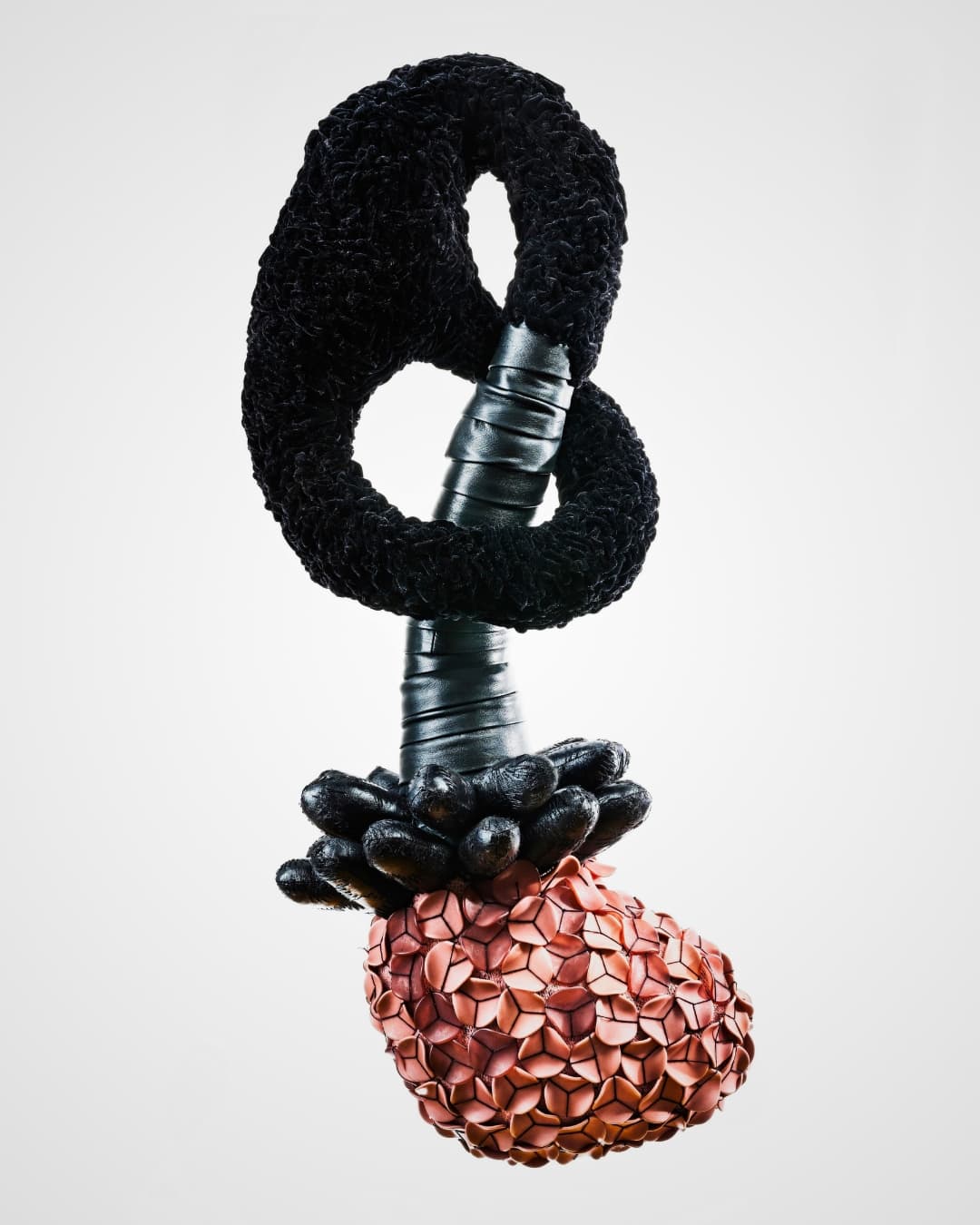
Tactile relationships
What is your artistic approach? Can you summarise what inspires you?
Tina Marais: The central focus of my practice is creating visual and textile art that emphasises the tactile relationship between materials. My work intertwines memories and experiences, capturing the passage of time through texture.
I gather and transform fabrics, objects and natural elements to delve into themes of history, life and transformation. My practice blends physical craftsmanship with sensuality, resulting in new forms inspired by the living, mineral and alchemical realms.
I’m particularly intrigued by folds – whether in philosophy, time, skin, or material – and how they can both conceal and reveal, protect and illuminate. Recently, I’ve been exploring innovative material approaches that investigate the entanglements between organic and inorganic elements, as well as human and non-human systems.
Through my art, I critique patterns of consumption and explore themes such as isolation and metamorphosis, while also highlighting the connections between people and ecosystems.
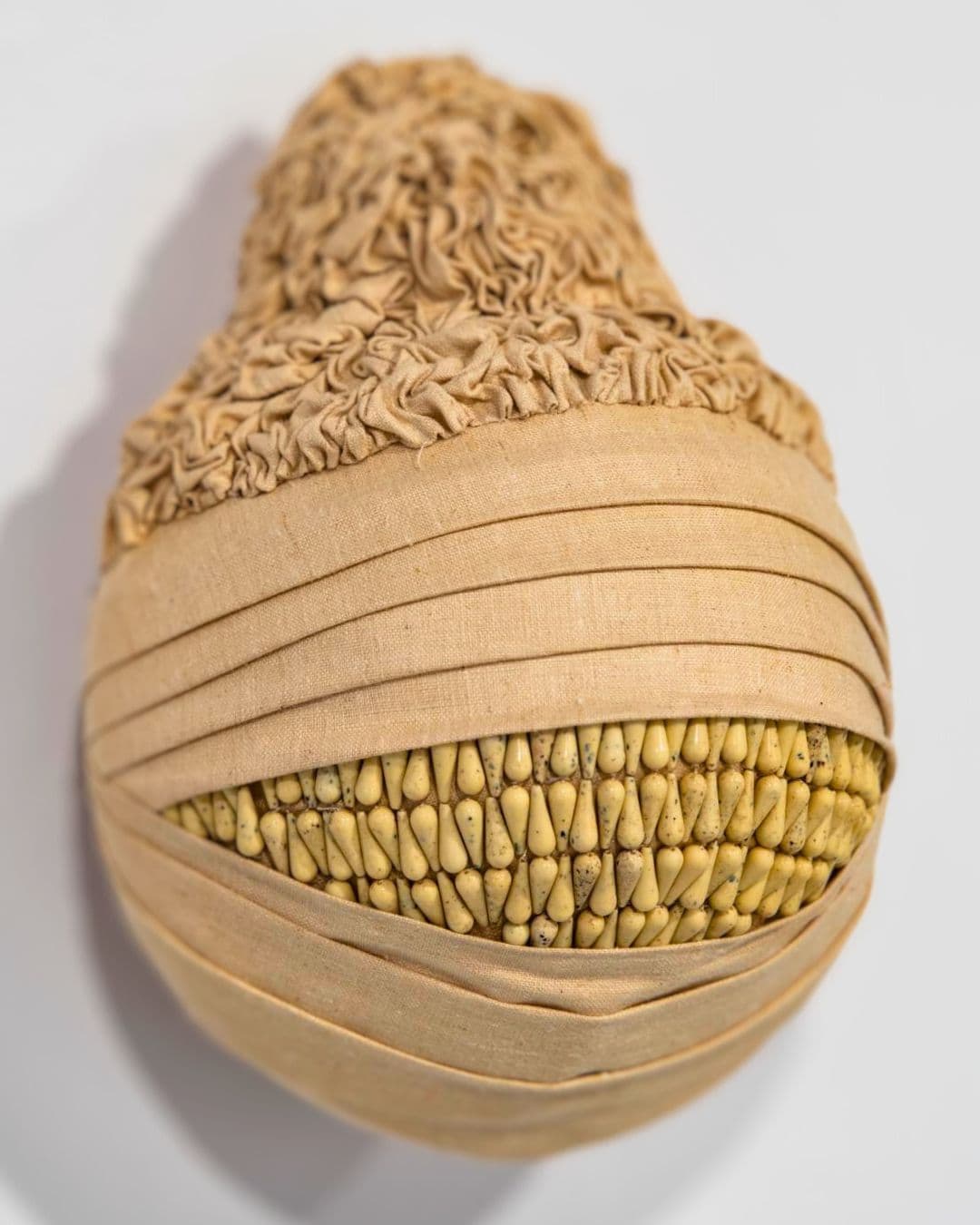
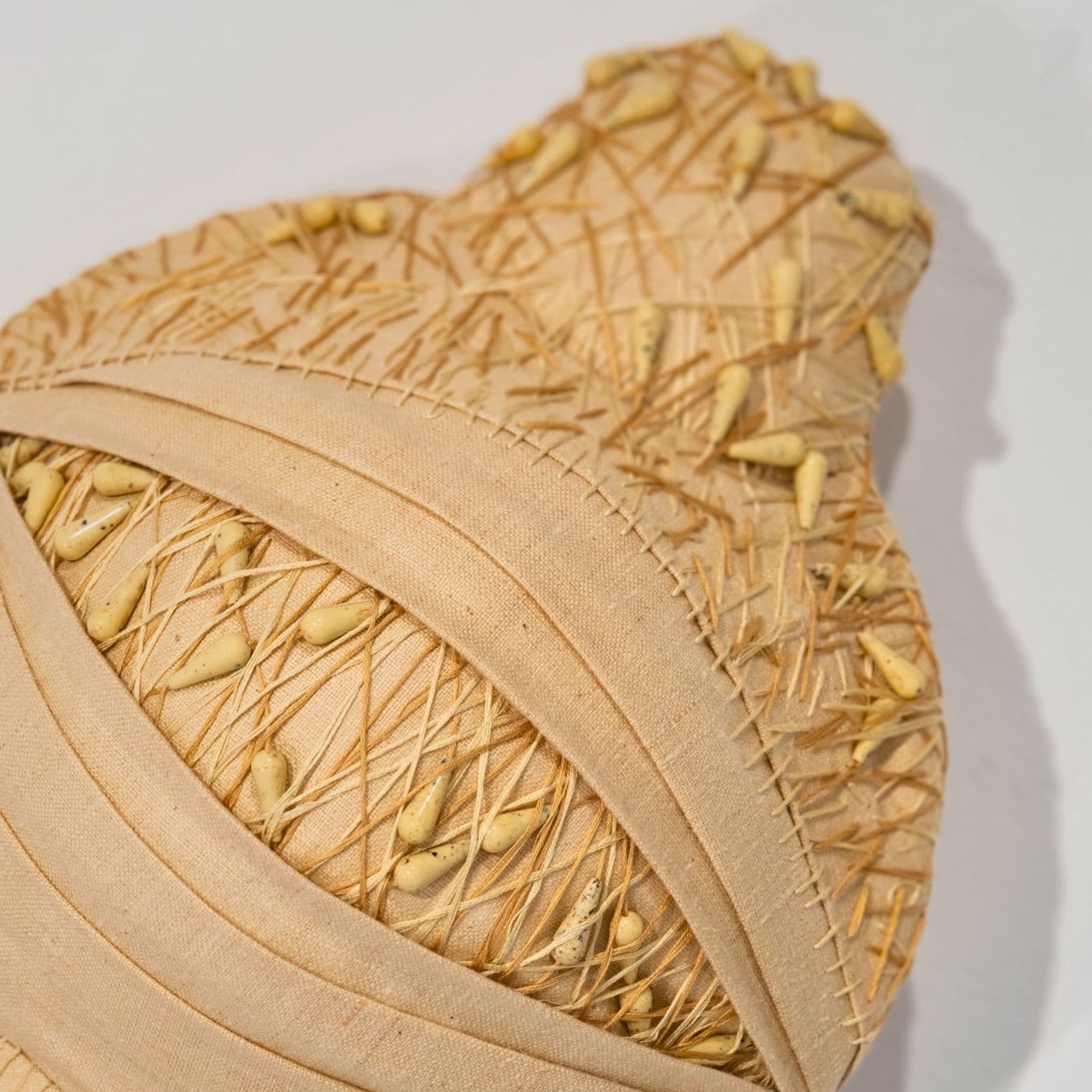
Material reflections
What made you decide to work with sculptural textiles?
My early experience as a costume designer deeply influenced my preference for dimensional structures in my work. From a young age, I was captivated by contemporary sculpture, particularly large-scale pieces.
This dimensionality resonates with the natural world, which is inherently layered and complex. The earth itself is built of layers, and everything around us consists of dimensional cellular structures. Even human nature and abstract systems are complex structures.
These reflections have transformed my approach to creating, making physicality and dimensionality central to my process.
“I find that work truly comes alive – charged with emotion and content – when it occupies space in three dimensions.“
Tina Marais, Textile artist
I always begin with a concept or message in my work, which guides my choice of materials. For instance, cotton is not only connected to water usage in its production but also to its journey from plant fibres to thread, fabric and beyond – often travelling across the globe multiple times.
Historically, cotton is also linked to the legacy of the slave trade. In contrast, I’ve recently worked extensively with linen, a material with a rich history dating back to ancient Egypt. Linen’s more eco-friendly production and natural antibacterial properties resonate with themes of healing for me.
Understanding the ‘voice’ of materials and their histories informs my choices and enhances my creative process.
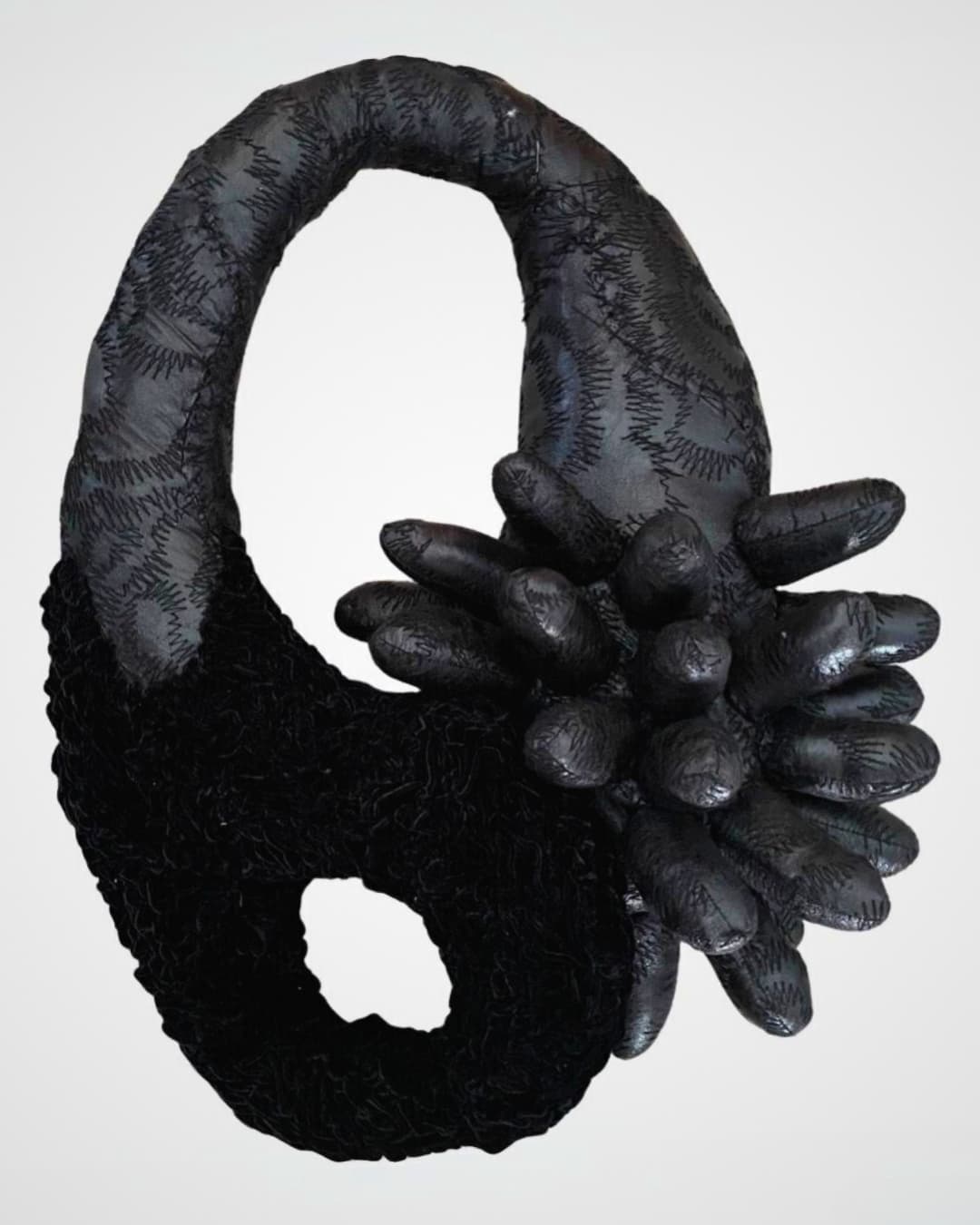
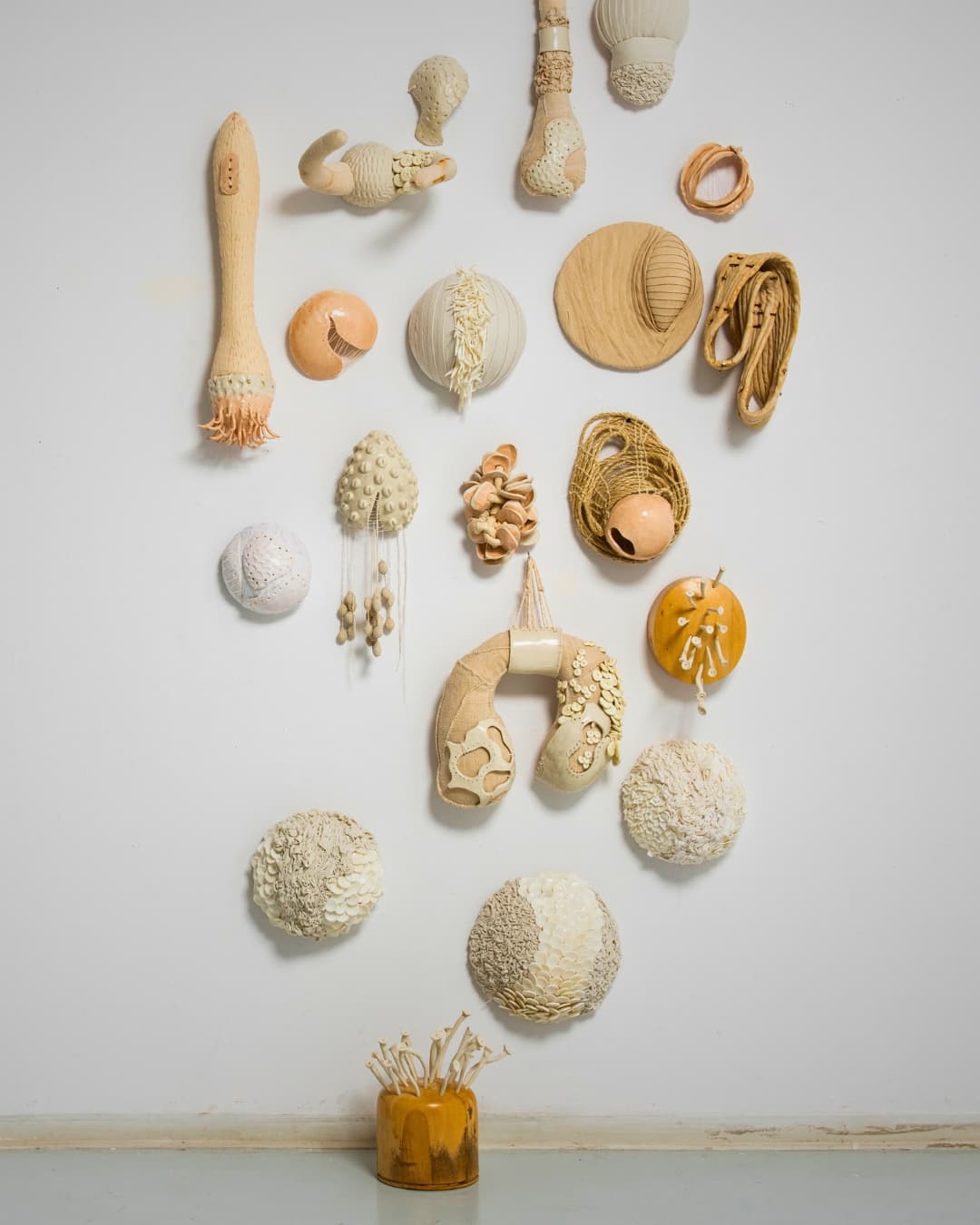
Organic seedlings
Tell us a little about the artwork you created for your Stitch Club workshop…
Yes, I’m excited that I was invited to present a workshop to Stitch Club members. In my workshop, I guide participants through the process of creating dimensional soft sculptures using textiles, thread and basic embroidery stitches. The sculptures, entitled Organic Seedlings, are inspired by the intricate details of seeds, grains and flower stems.
I have a deep passion for crafting these structures using a diverse range of materials, from precious silks and leathers to wool threads, rope and embroidery floss. I always incorporate beadwork and found objects to enhance the dimensionality and detail of the sculptures.
Being a somewhat ruthless collector, I love going on archaeological ‘digs’ in thrift stores and markets, or in my own studio’s inventory, often including unlikely materials to complete my assemblages.
Additionally, I demonstrate a basic technique for drafting patterns in an organic manner, which will help participants understand the potential for creating dimensional textile structures.
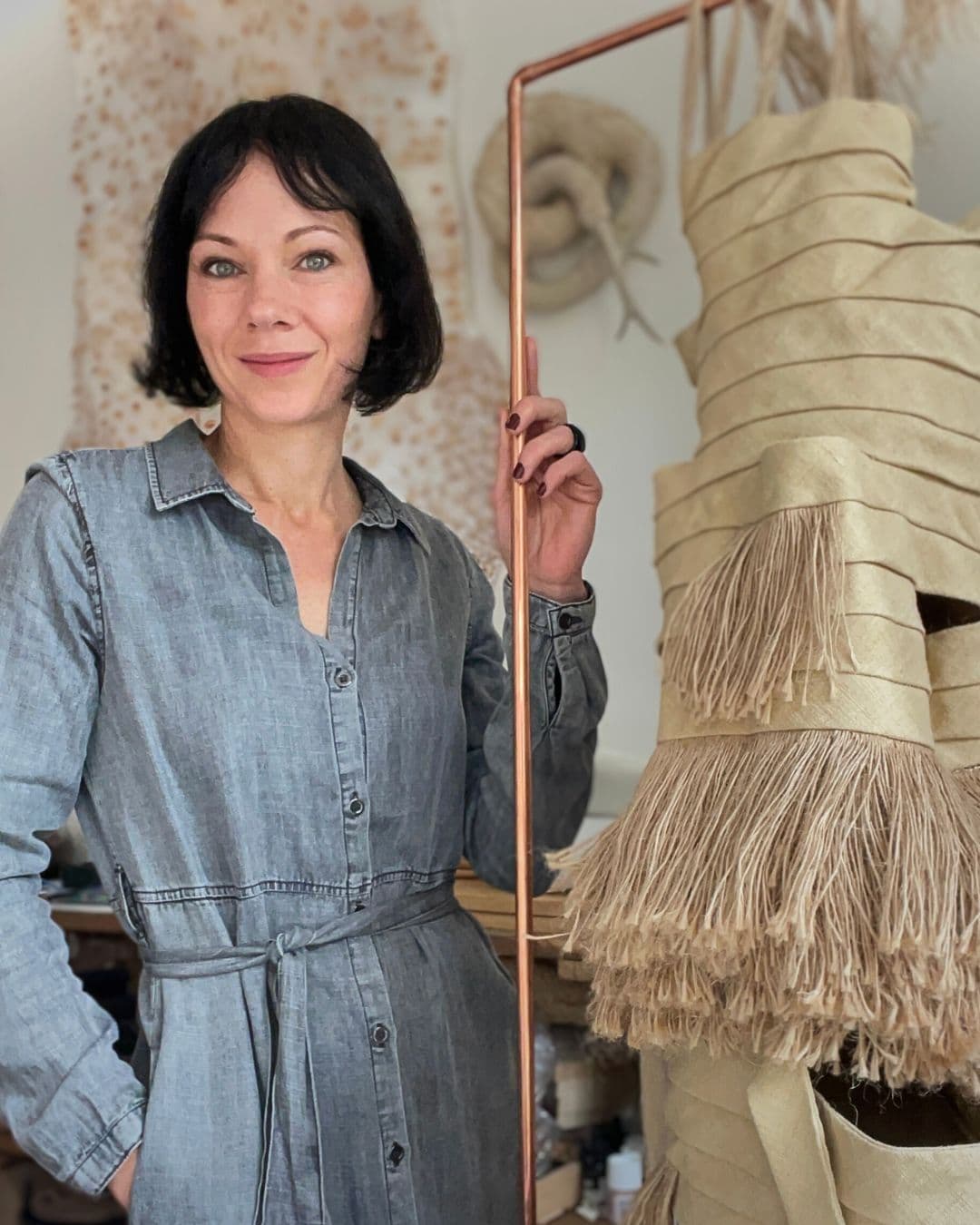
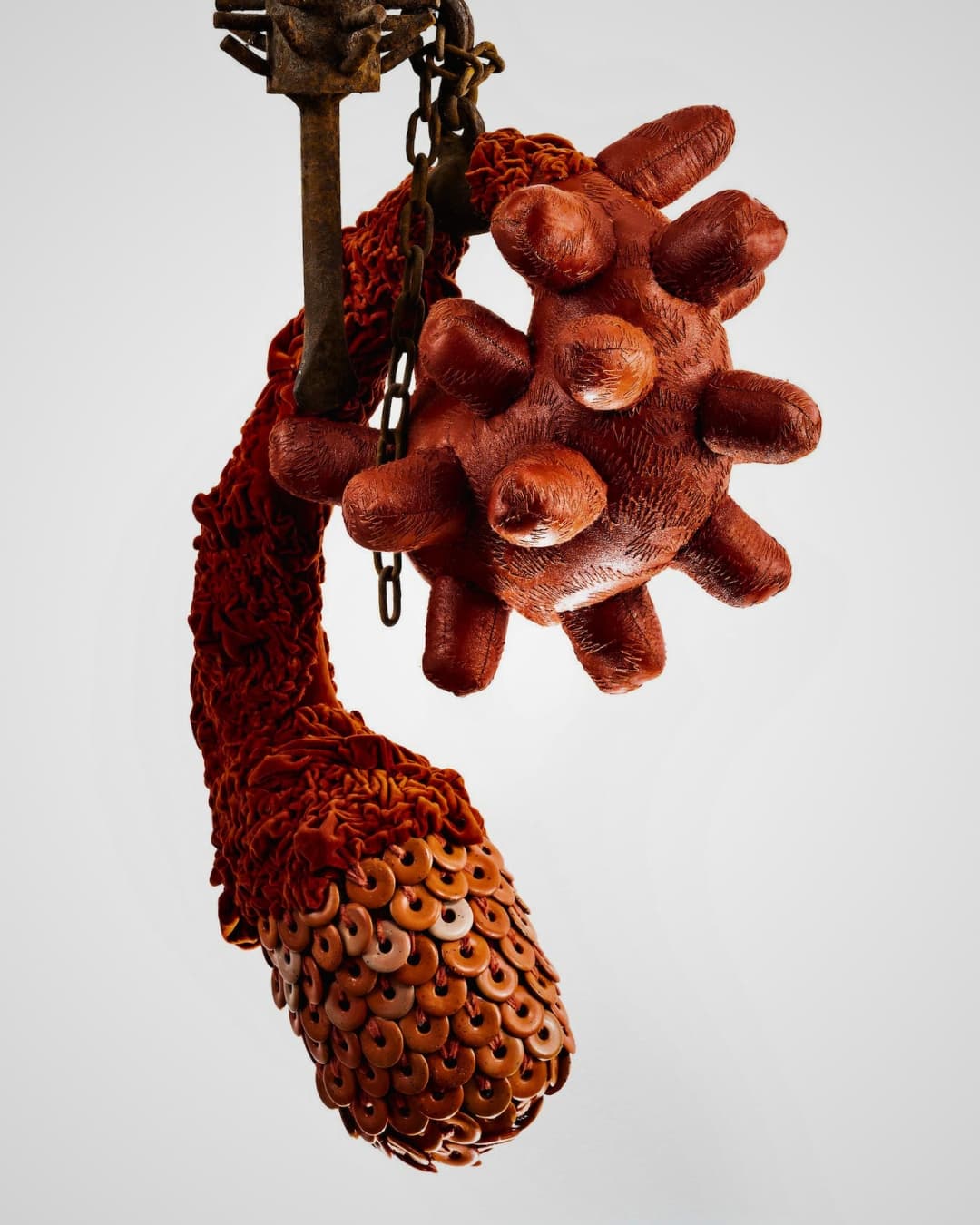
Organic & interactive
Can you tell us a little about your making process and techniques?
I begin each project with a core concept – whether it’s an idea, a question, or a message – and then immerse myself in research and sketching, often producing numerous sketches. I use line drawings to explore and clarify my vision, particularly how I want the piece to interact with positive and negative space.
Once I have a clear direction, I gather materials, carefully considering their origins and how their unique histories will contribute to my concept.
“The making process itself is often akin to a physical dance.”
Tina Marais, Textile artist
Making involves a dialogue with the materials, responding to what they allow and coaxing them into alignment with my intentions. This process is highly organic and interactive.
When working on pieces with repetitive elements, I frequently find myself thinking about future projects, leading to overlapping ideas and themes in my studio.
I enjoy delving deeply into bodies of work, exploring a particular theme or research angle over several years before transitioning to new explorations.
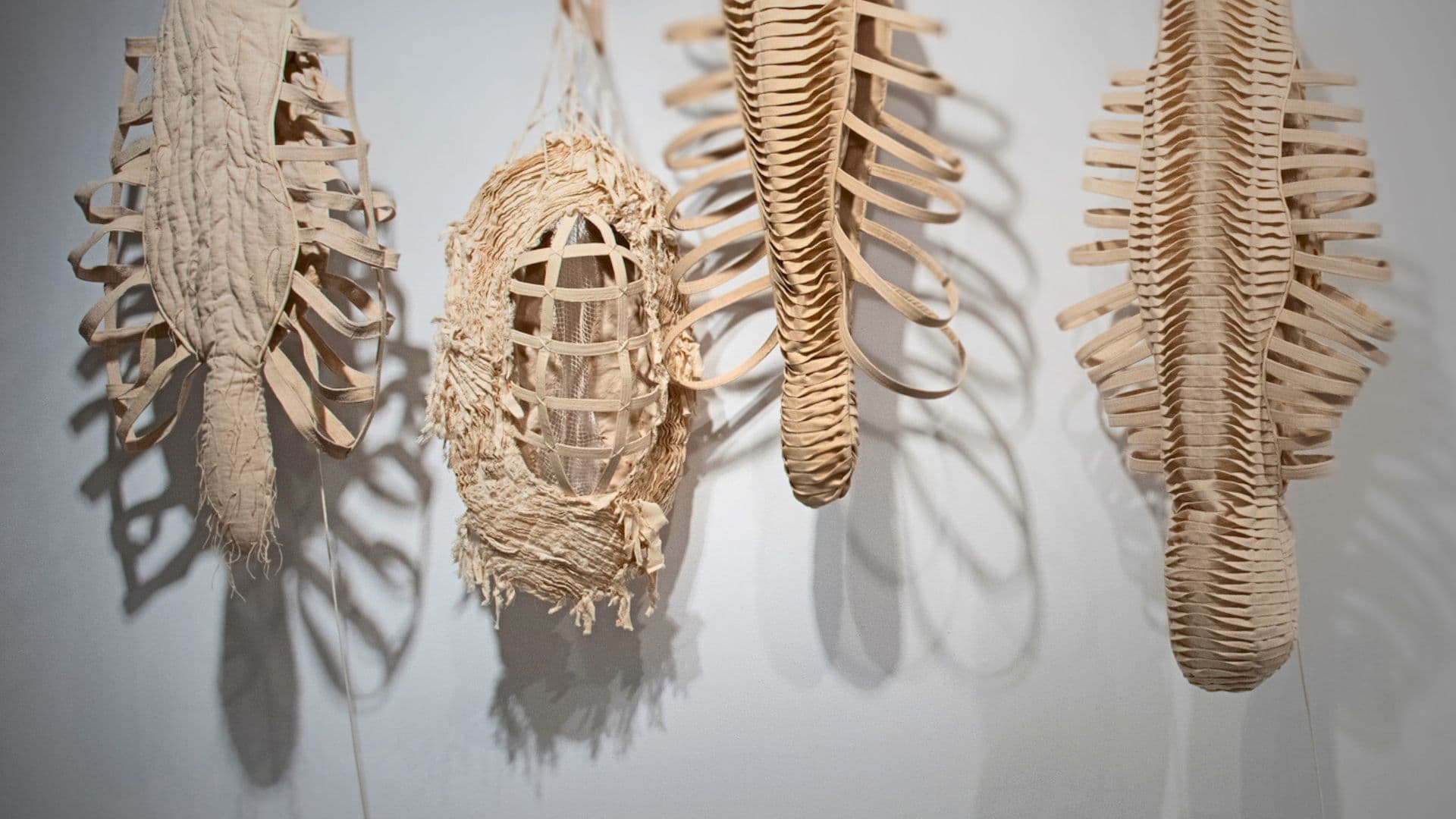
Essential tools
What are your must-have tools or supplies when you’re creating and where do you source them?
I look for good scissors and good thread – and needles that don’t break under stress. When selecting scissors, I prioritise how they feel in my hand rather than the brand or model. I consider factors like the length of the blades and how smoothly they cut through fabric.
My all-time favourite was a pair of super sharp tailor scissors I purchased in Portugal. Unfortunately, they ended up in the trash at the airport security after teaching a course in Poland. At the moment I’m using Fiskars professional scissors.
For heavy-duty tasks, I rely on a robust sewing machine, the Singer heavy duty denim 6335M. I’ve had Bernina machines in the past and absolutely love them, but have ‘killed’ a few sewing machines over the years.
As I don’t do machine embroidery, I prefer sewing machines that can handle various thicknesses and that are mechanical instead of digitally controlled. The Singer gives me a good alternative to an industrial sewing machine and is heavy enough not to ‘bounce’ when I’m really getting into sewing.
For machine sewing I always use SCHMETZ needles: I prefer universal needles, but change depending on what I’m sewing. For hand stitching, I go for larger and longer needles, upholstery or doll needles, and I source my needles from Loops & Threads (from Michaels stores, USA and Canada).
When it comes to thread, I prefer Gütermann because its high quality significantly improves the results and saves time.
I’ve adapted to using thicker needles and threads due to some medical treatments that have affected my fingertips. Instead of fighting this, I’ve adjusted my tools to suit my needs.
My suppliers vary depending on my location, as I move around frequently. In Montreal, for example, there’s Ugarit La Maison de l’Artisanat – a fantastic hidden store for bulk beads. I visit haberdashery stores, art supply shops and hardware stores, always on the lookout for objects that can be reinvented or repurposed.
I also enjoy working with found objects and vintage fabrics, often sourcing materials from second-hand stores (known as ‘fripperies’ in France and Quebec), street markets and even during long walks where I collect seeds and pebbles.
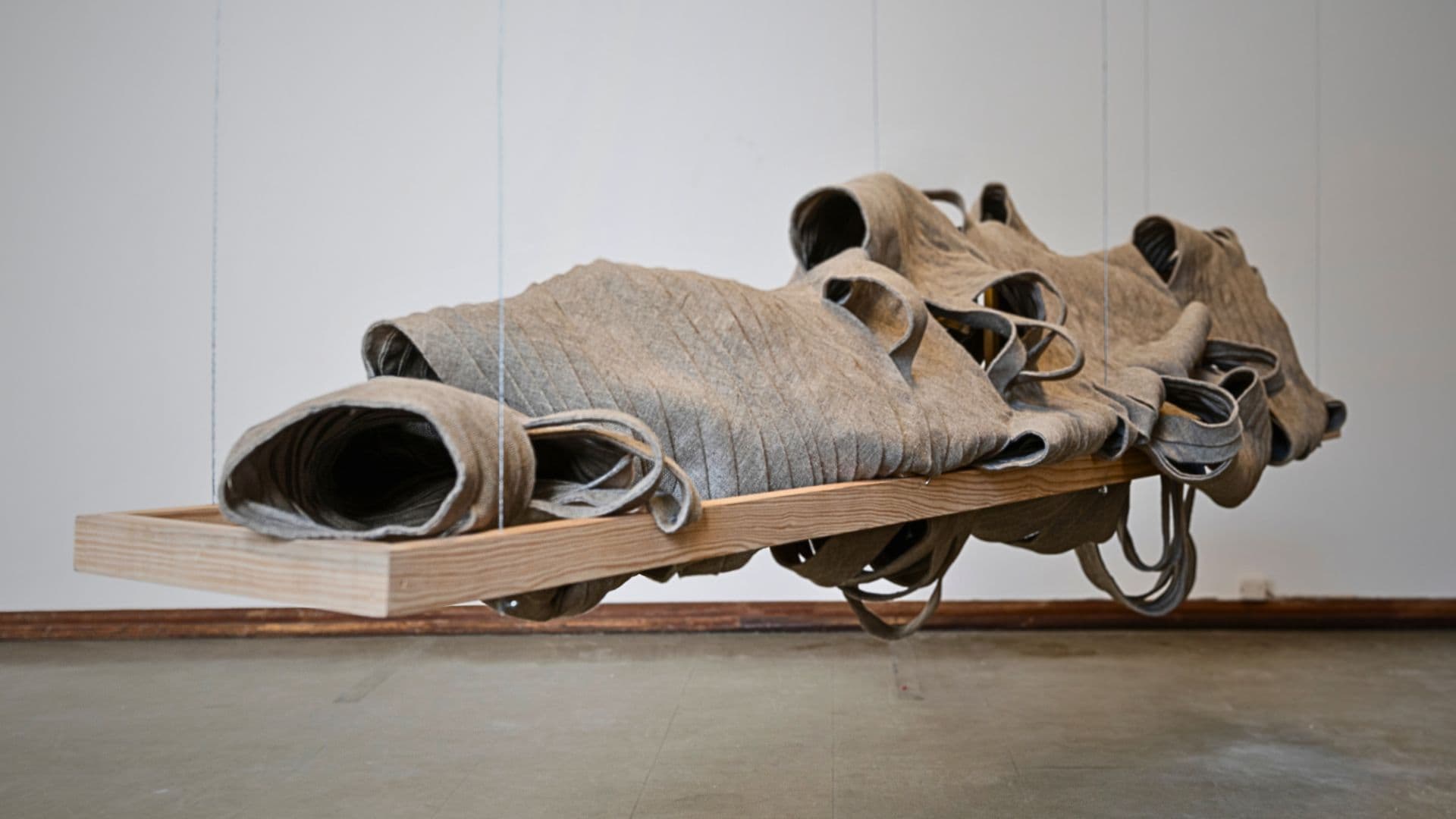
Tempted by tactility
How did you develop your artistic skills?
My passion for the arts, fibres and materials began at a very young age. I was born in 1977 and raised around Cape Town, South Africa. The diverse landscapes and cultures there profoundly shaped my connection to the natural environment and my artistic vision.
I studied fine arts and visual communication at the Open Window Art Institute near Johannesburg in South Africa, focusing on painting, sculpture, drawing and printmaking.
During this time I also took courses in pattern making. Initially, I didn’t view my textile work as part of my fine arts practice, but I eventually transitioned into costume making and design for theatre and dance.
In 2008, I migrated to Canada. By 2011 I’d settled in the Montreal region of Quebec. This significant transition expanded my arts practice and artistic perspective, allowing me to create over 80 community-based, social outreach, cultural mediation and public art projects over a decade.
During this time I shifted my focus to textile and fibre arts, which greatly broadened my scope for conceptual exploration, scale and installation. The fluidity and tactile nature of textiles felt like a natural extension of my artistic ideas.
In 2022, this led me to pursue a master’s degree in Fibres and Material Practices at Concordia University in Montreal, where I focused on critical thinking and research creation in art making.
“I believe that developing artistic skills comes from persistent practice and a curiosity to make the impossible possible.”
Tina Marais, Textile artist

Collaborative enrichment
I’ve been fortunate to have an incredible network of friends and an artistic community to exchange ideas with. Having extraordinary women, friends and artists around helped to shape my journey.
While solitary studio time is essential, collaborating with others and engaging in community discussions greatly enriches my work.
My parents, in their own distinct ways, provided me with access to a wide range of cultural activities, including music and art, which were integral to my upbringing. My son, Garrett Struthers, has been a constant source of inspiration, support and valuable critique throughout my studio practice.
My partner, Marc Villarubias, offers unique challenges to my artistic ideas and critical approach, especially in aligning ecological issues with cultural understanding. His support has been invaluable in grounding abstract concepts into concrete research and creative thinking.
I previously had a large studio space in downtown Montreal but have since transitioned to a home studio. I prefer working unconventional hours, often late at night and find that the intimacy of a home studio better suits my creative process.
Being immersed in a more personal space allows me to fully engage with my work. When travelling, I usually have some hand sewing or simple preparation of multiple elements with me; it becomes a mutative process while in transit.
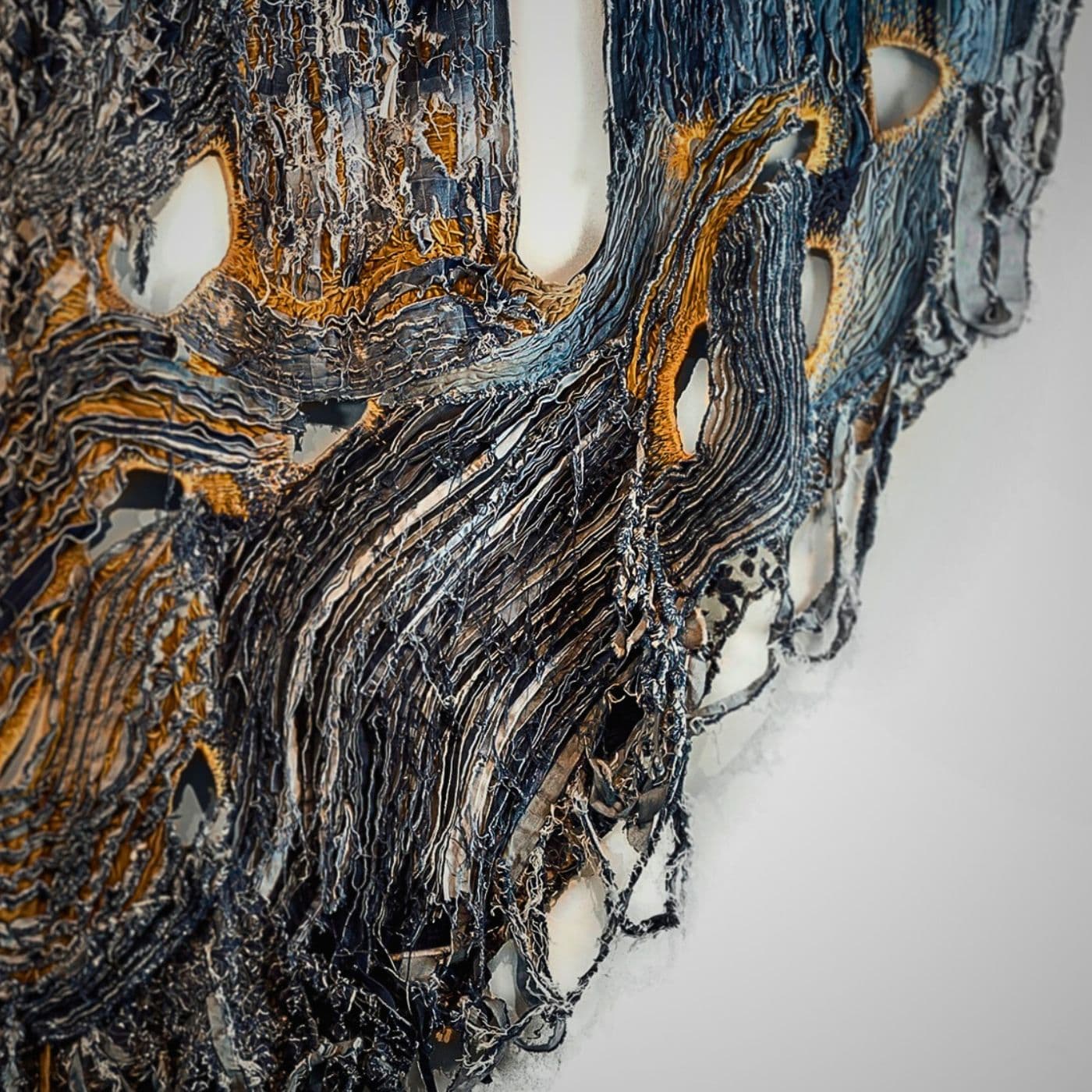
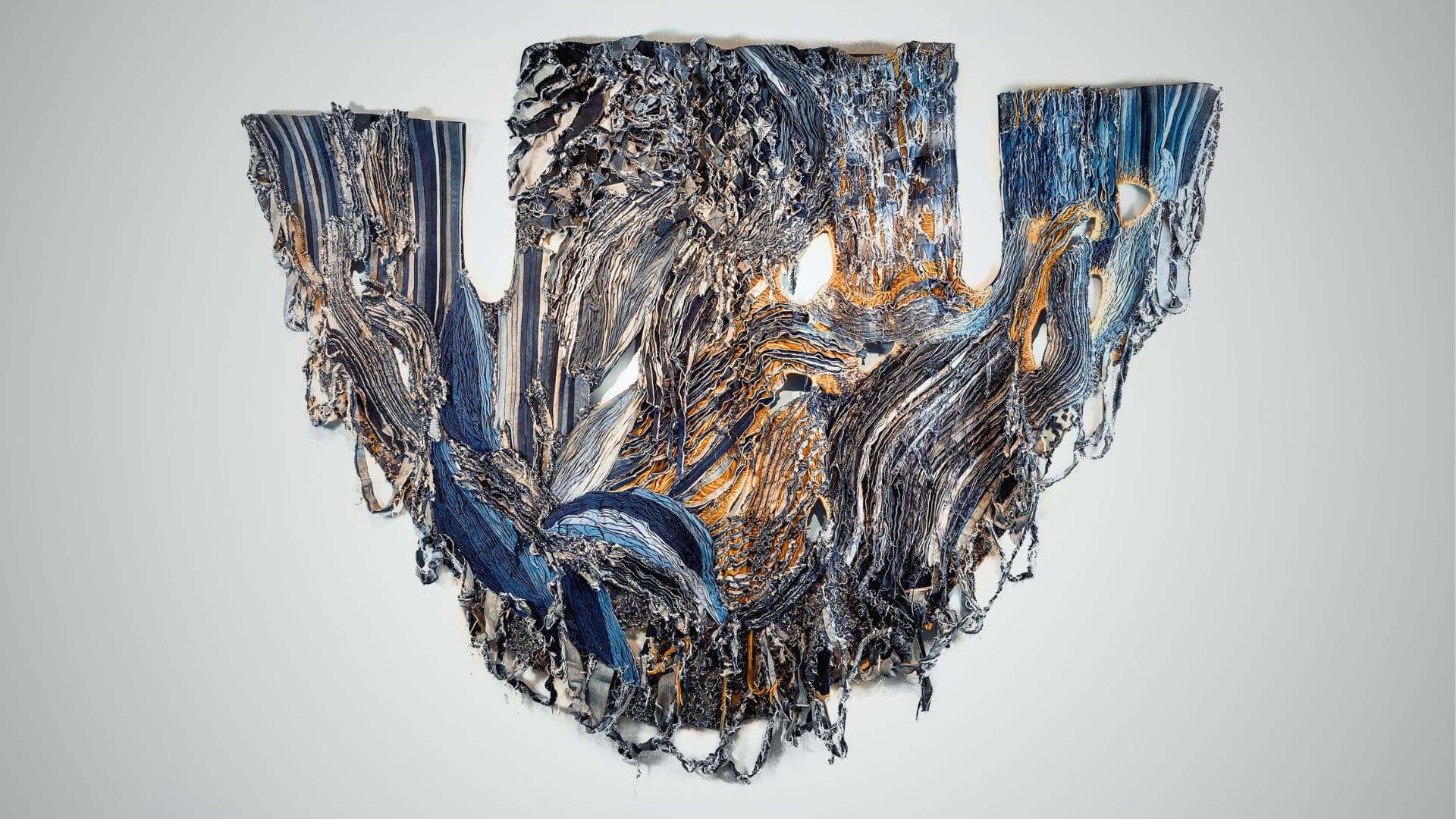
Water & cloth
Which piece of your textile art is your favourite, and why?
It’s very hard to just highlight one work. Often I am my own worst critic, and every artwork lays the foundation for the next piece. There’s a constant push and pull between connection and realisation, technique and material.
As an artist, I think we’re in a constant pursuit of excellence that’s unachievable, and this is the place where the magic happens.
The artwork Untamed, which I created for a solo exhibition in 2017, still really stands out for me. It’s a large-scale artwork created in recycled denim, the first work that went on to become the flux de l’or bleu series. It’s an artwork with layered denim, machine and hand stitched, and detailed with silk embroidery thread.
“The work Untamed reflects on the fragility of water and the impact of the cotton denim industry on water supplies.”
Tina Marais, Textile artist
I’m visualising water as a wounded body bearing the weight of consumerist culture, slowly suffocated, drained by pollution and chemically damaged by micro-fibres and plastics.
The character of water is not a single thing but has multiple manifestations. I’m fascinated by the physicality of water: its weight, the fluidity of water as a structure, the force of a wave as it’s propelled to the shore or broken against rocks.
I’m thinking of water as fluid bodies, holding stories in its depths. Water is a life force, containing millions of microorganisms, a breathing, living entity that’s in a constant state of change.
I’m curious about how to depict this entangled state of water with fibre and all its pathways.
I often reflect on the cloth of the garments that we wear, metaphorically unravelling it back to threads and fibres. I imagine the fragmented traces of the production process of textile, imprinted in its transformative story.
I’m reflecting on the relationship between water and the effects of cloth production on ecosystems and structural systems. I’m exploring how these relationships weave together in trajectories across bodies of water and the constant intercontinental flow of materials used to fabricate suitable second skins for our bodies.
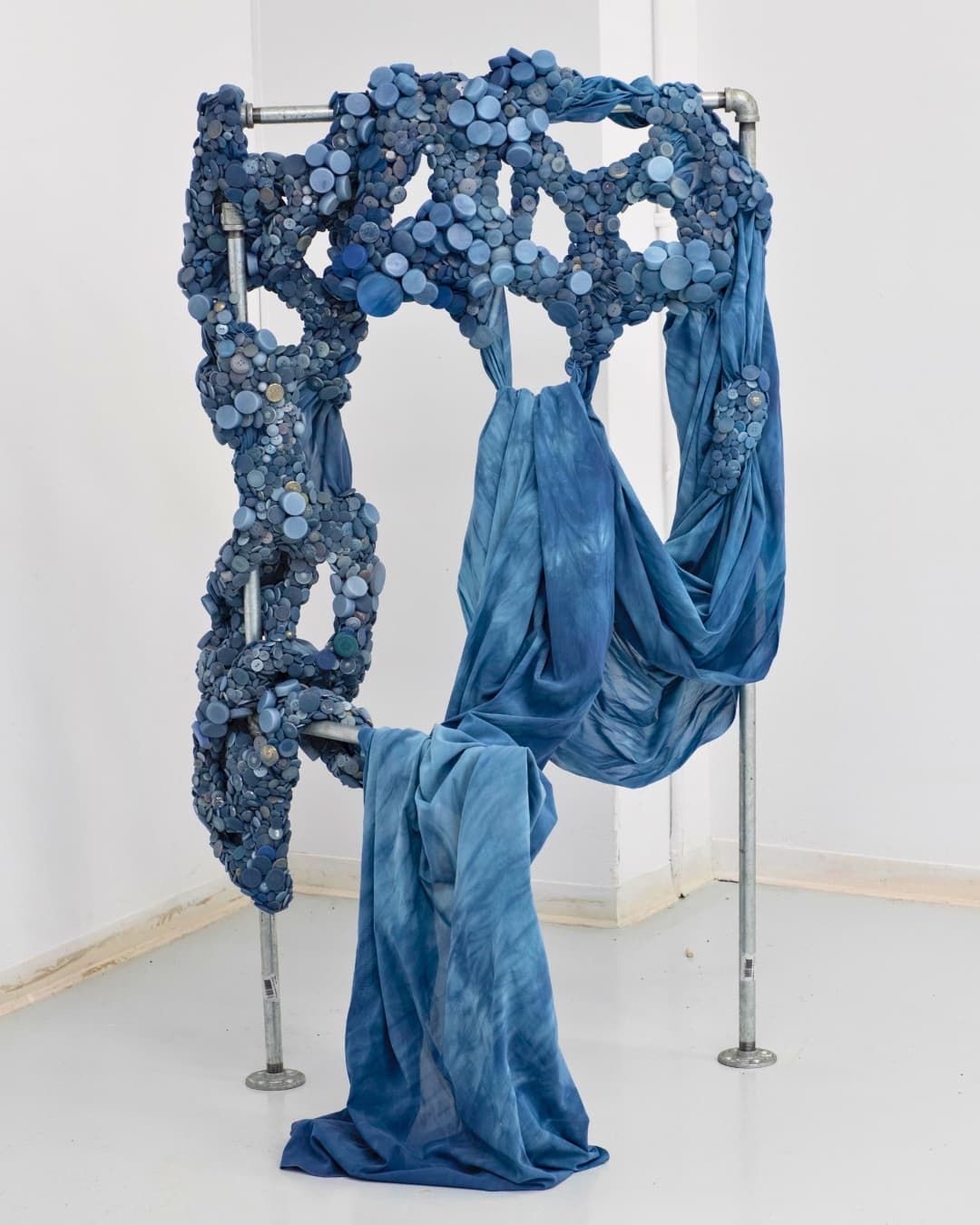
Pistachios & tea bags
Another series of works that were particularly challenging in concept structure and material choices was the body of work created for my thesis exhibition at Concordia University titled Unfold, My Skin, in 2022. These works included Unfolding, Le Petit Mort, Picalaire II, Unfold Me, Undercurrents and Bounded Traces V and Bounded Traces VI.
They were created using a variety of carefully selected materials, combining ceramic, wood, reclaimed linen, embroidery and – even for some works – collected pistachio shells and tea bags. It spoke of new materialism, the body, and the pathways of material connection and accumulation.
I enjoyed the challenge of the combination of research, conception and installation. The individual pieces that made up this series were either sold to private collectors or have travelled for other exhibitions in Canada, France, China, Belgium, Lithuania and Australia. I was so thrilled that one work was included in the Fiber Art Now Excellence in Fibres exhibition.
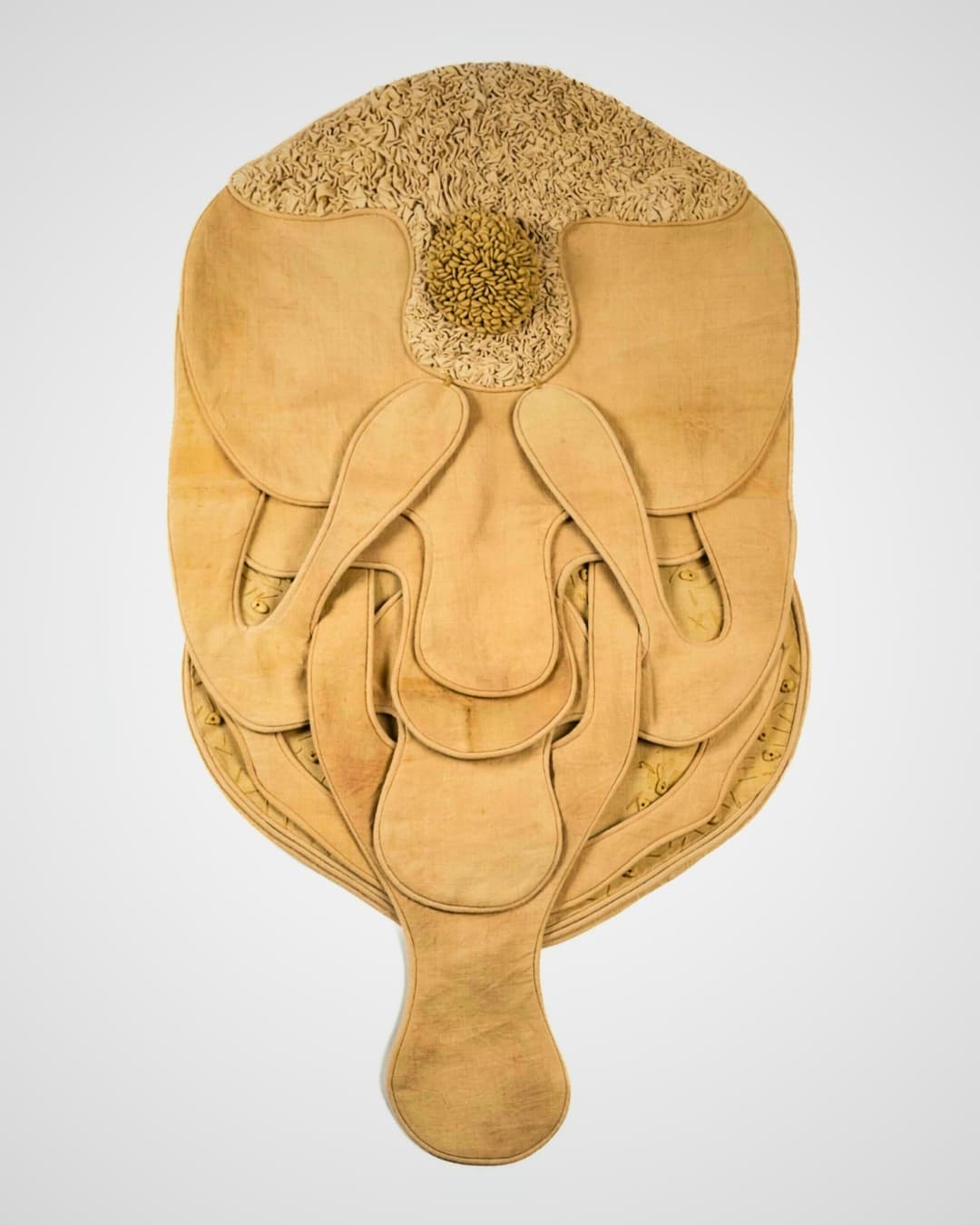
Textures & objects
How has your work developed over time?
Over time, my work has evolved significantly, driven by my ongoing exploration and deeper understanding of textile art.
Initially, I focused on traditional textiles, but I soon began experimenting with vintage fabrics, found objects and unconventional materials. This experimentation has allowed me to develop unique textures and forms in my art.
One of the hallmarks of my practice has been the integration of found objects. By incorporating items like seeds, pebbles and other non-traditional materials, I add layers of meaning and texture to my pieces. This approach reflects my deepening engagement with the materiality and context of my work.
As my practice has matured, I’ve placed greater emphasis on the tactile and sensory aspects of textile art. My pieces now explore the physical and emotional responses elicited through touch and texture, which has led to a more nuanced understanding of how viewers interact with my work.
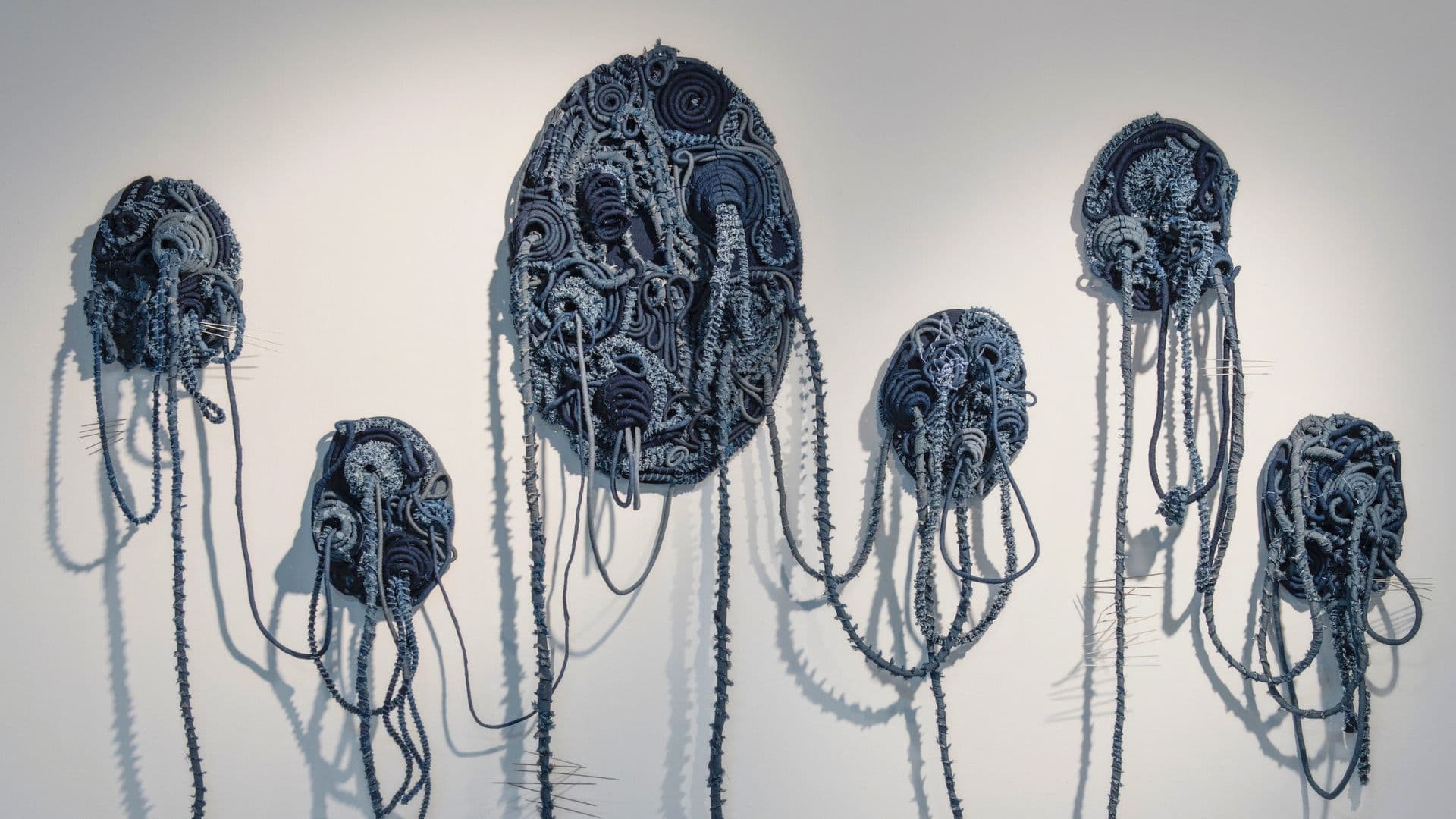
And what direction do you think your work will take in the future?
Looking ahead, I see several exciting directions for my art. I’m committed to exploring and incorporating more eco-friendly and ethically sourced materials, which could involve further innovation with recycled and upcycled textiles.
I’m interested in merging textile art with other mediums or art forms. Collaborations with digital artists, architects or designers could lead to new and exciting hybrid works that push the boundaries of textile art.
I may expand my work into larger-scale installations or public art projects, which would allow me to engage with broader audiences and explore new dimensions of my art.
Integrating technology with traditional textile practices is another area I’m excited about. Experimenting with digital embroidery, smart textiles or other innovative approaches could blend the tactile nature of textiles with technological advancements.
And finally, I plan to continue exploring storytelling through textiles, finding new ways to convey complex themes and personal histories through my art.
“My goal is to keep evolving and deepening my engagement with materials, techniques and concepts.”
Tina Marais, Textile artist
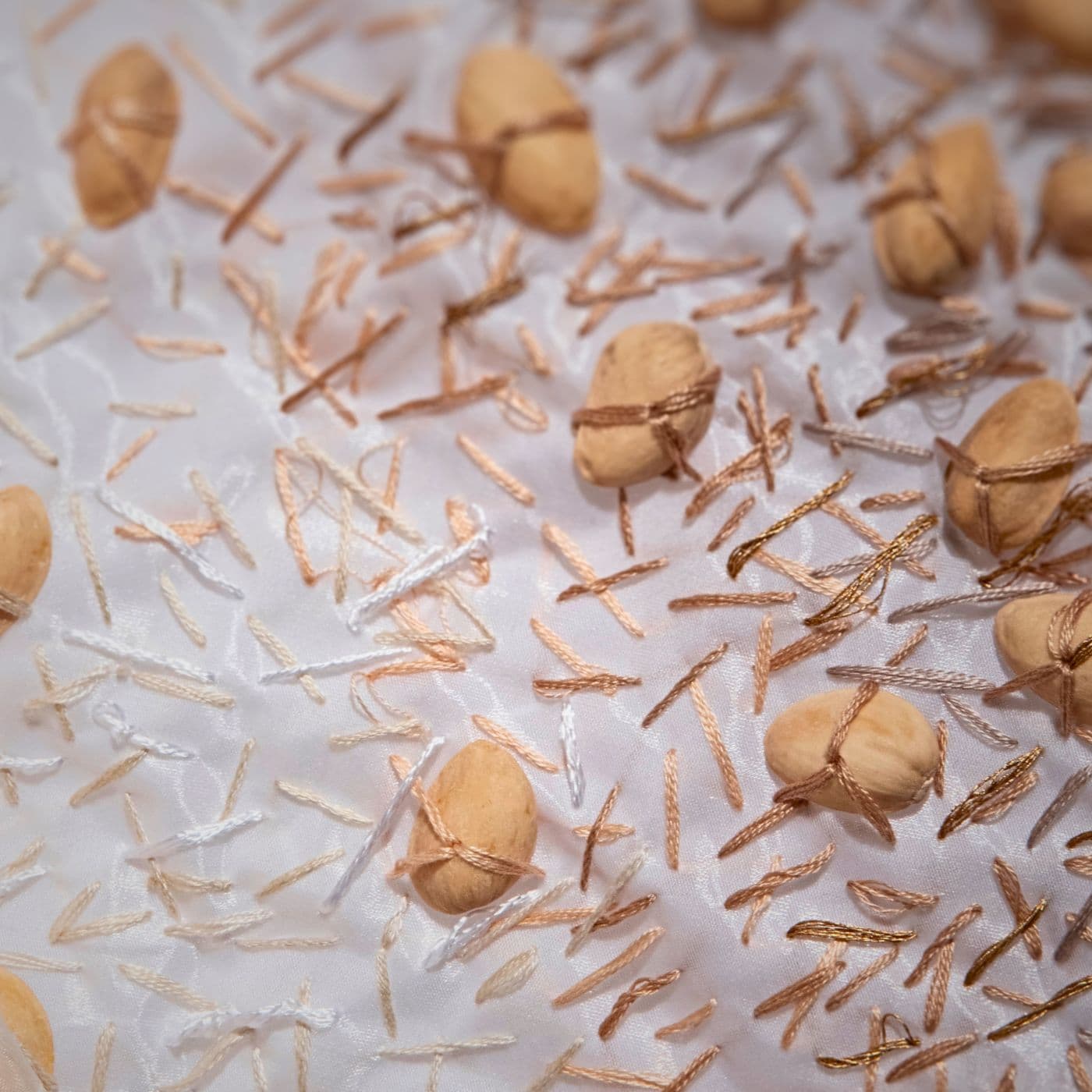
Experiment freely
What advice would you give to an aspiring textile artist – and in particular if they wanted to use your kind of materials and techniques?
If you’re interested in working with materials and techniques similar to mine, my advice would be to embrace experimentation and allow yourself the freedom to explore. The essence of textile art lies in its tactile nature, so don’t be afraid to play with textures, colours and forms.
One crucial piece of advice is to develop a deep understanding of the materials you work with.
Whether you’re using vintage fabrics, found objects or traditional textiles, get to know their properties and how they interact with different techniques. This will give you greater control and inspire innovative approaches. For instance, I often use materials in unconventional ways, which requires a thorough knowledge of their strengths and limitations.
Another important aspect is to build a diverse toolkit. Invest in quality tools that feel right in your hand and adapt them to suit your needs, just as I do with my selection of scissors, needles and threads. Your tools can significantly impact your creative process and final outcome, so find out what works best for you.
Networking and building relationships with other artists and suppliers can also be incredibly beneficial. I’ve found that engaging with a community of artists and visiting unique sources, like second-hand stores or street markets, has been invaluable in discovering new materials and inspirations.
Sharing experiences and resources, as well as collaborating with others, can provide new perspectives and opportunities.
Finally, be patient and persistent. Artistic growth comes from consistent practice and learning from both successes and failures. Celebrate your progress and stay curious about the world around you, as inspiration often comes from the most unexpected places.
These elements have greatly helped me move forward in my work, enabling me to refine my techniques and expand my creative boundaries. By staying engaged with your materials, your community and your own evolving process, you’ll be well on your way to creating meaningful and impactful textile art.
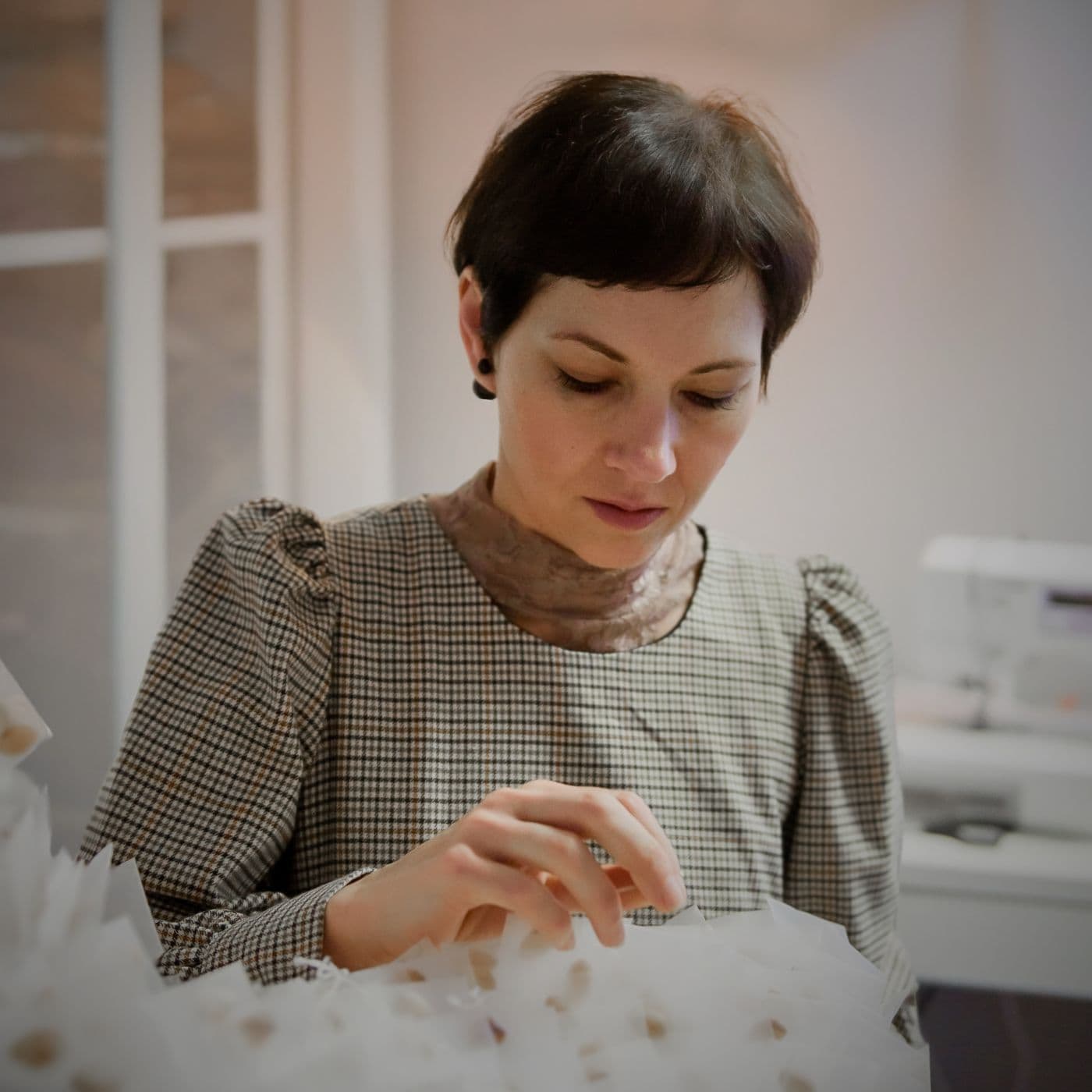
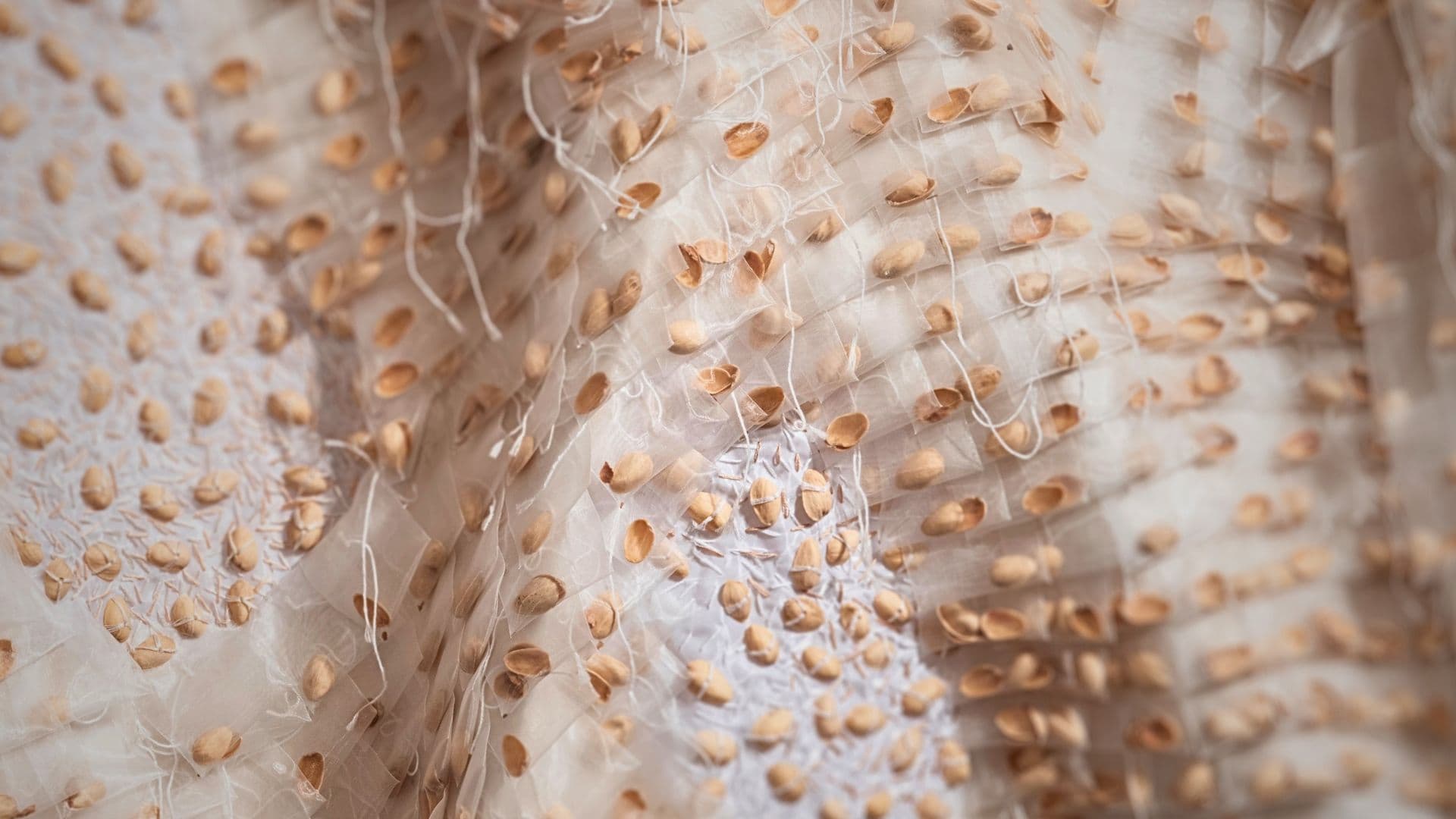

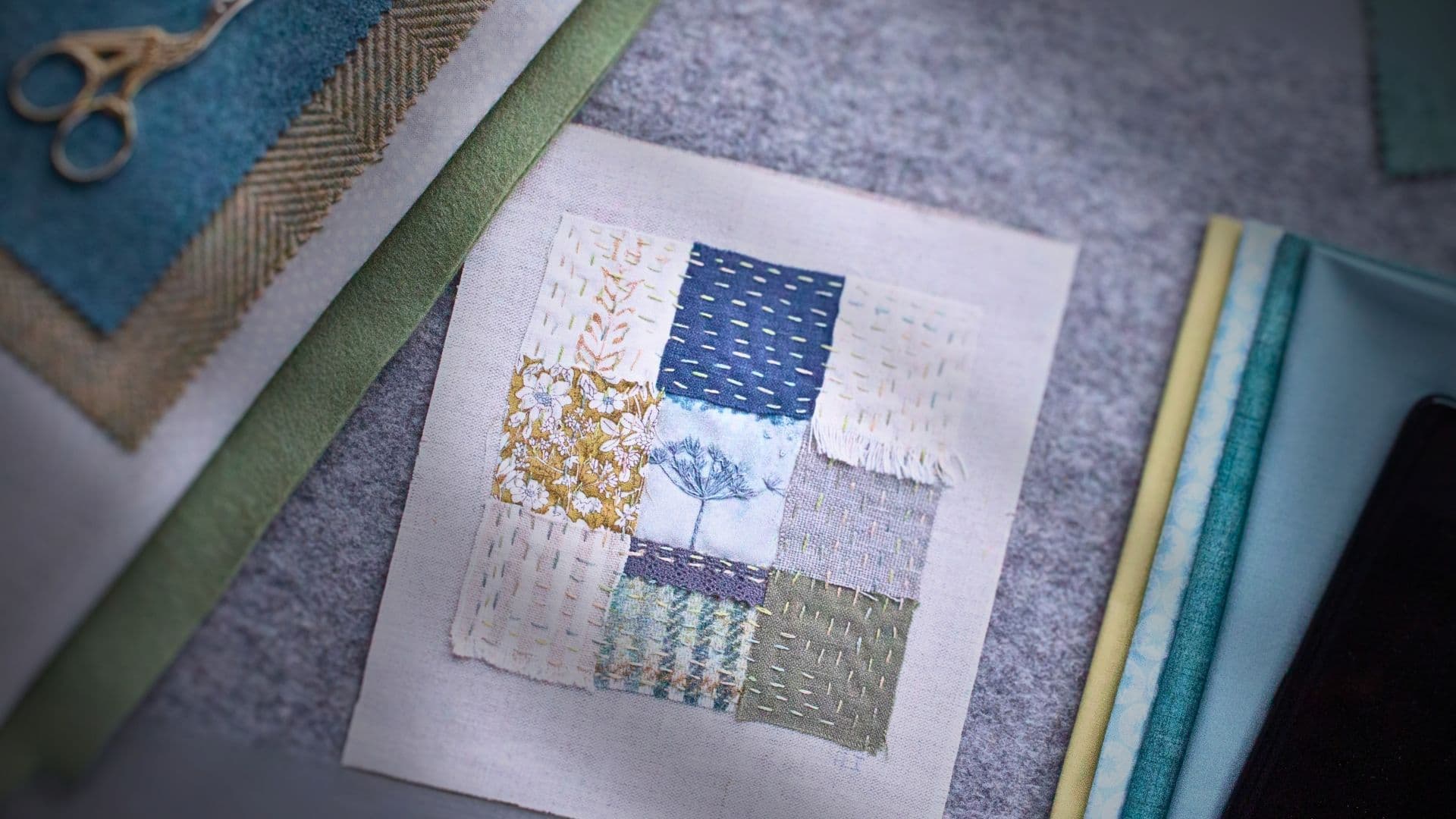
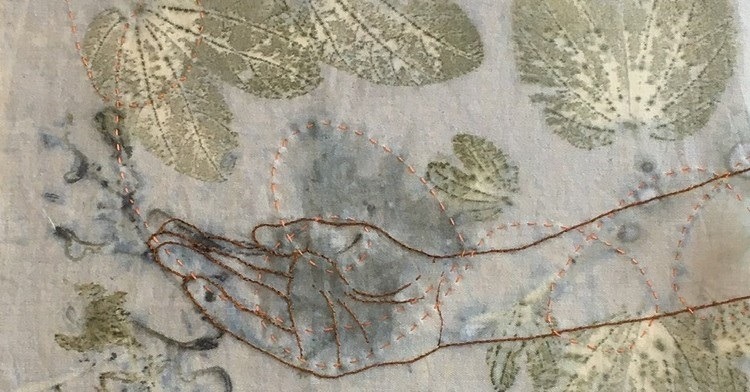
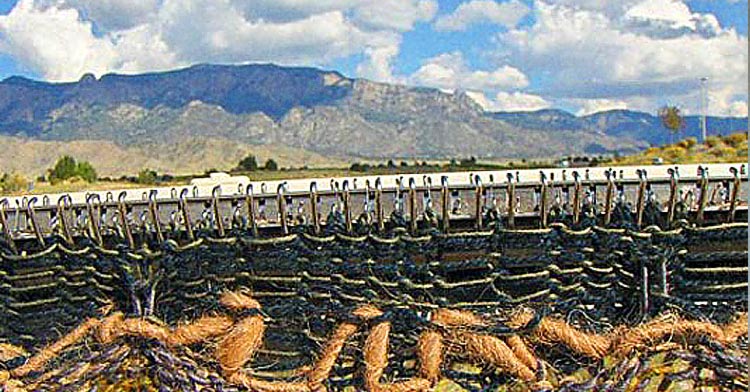
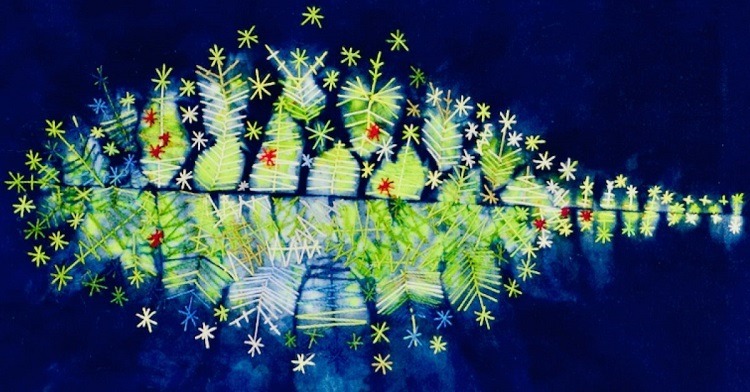
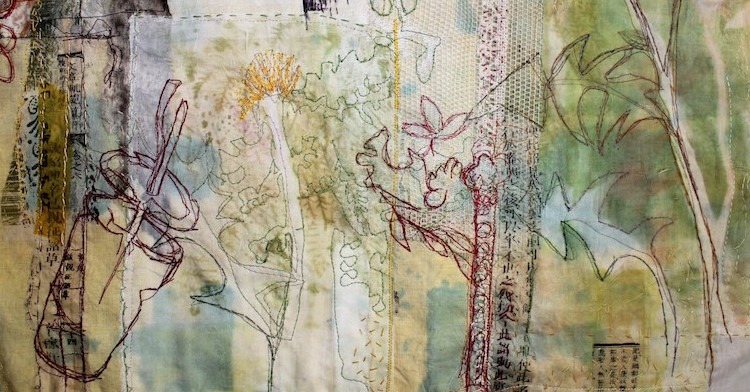
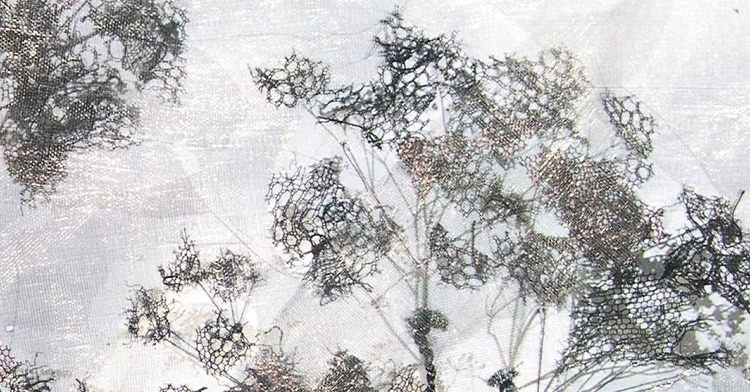
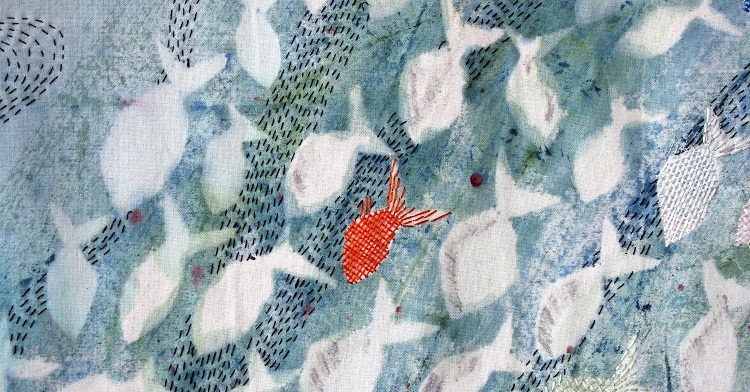
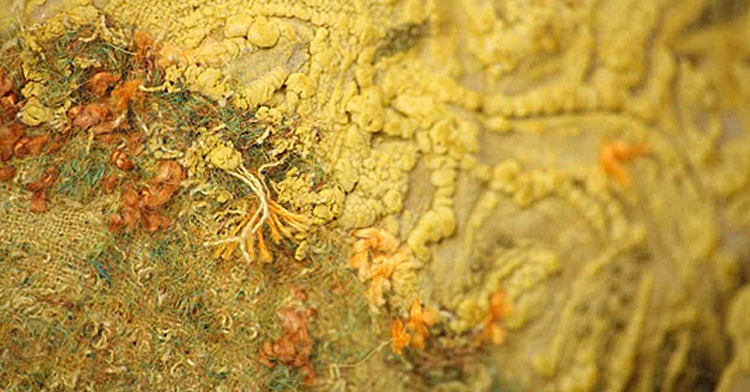
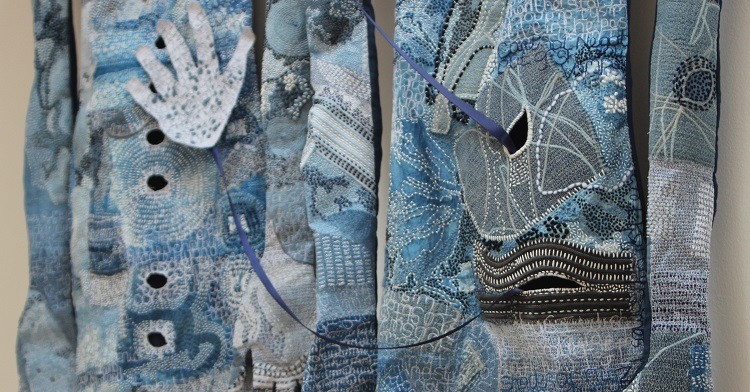
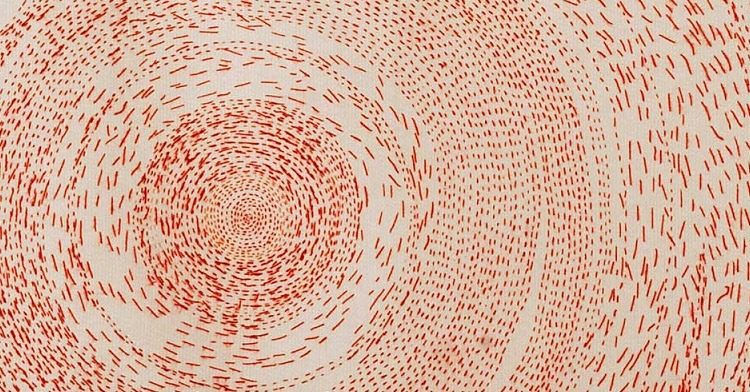
Comments